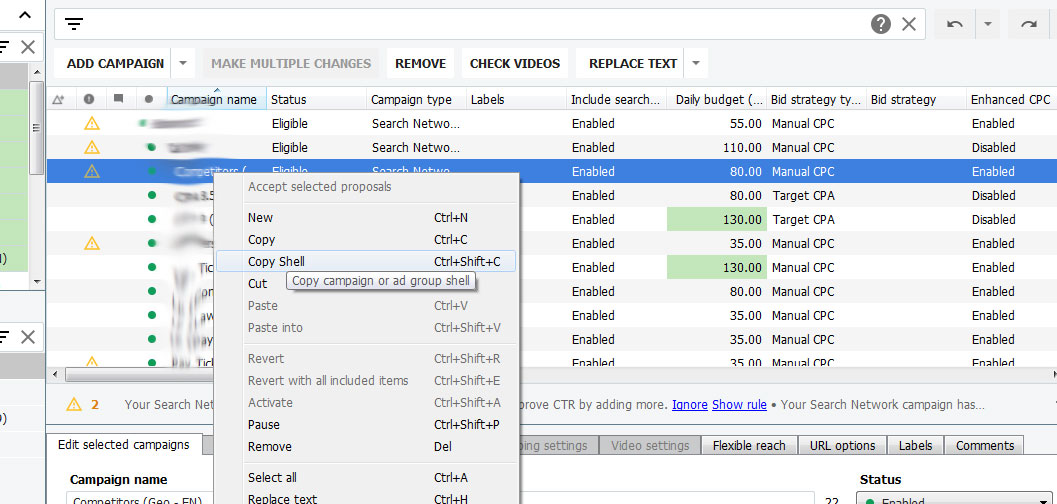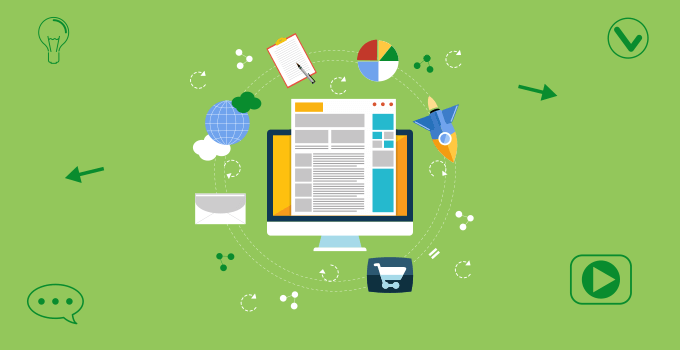
There are many advantages and challenges to running a local campaign. If you're not yet familiar with the benefits of running such a campaign, read on to learn more. These are the three most important aspects to remember when you implement a local PPC campaign strategy. Find out how you can maximize your local PPC campaign. And, don't forget to test and optimize your strategy to see the best results. You will have a successful campaign.
Google Ads responds to brick-and mortar stores' need for foot-traffic
As more companies choose to advertise online and offline, Google is responding to brick-and-mortar stores' needs by offering a new attribution metric that links online actions to foot-traffic. This metric measures the effectiveness and efficiency of advertising by linking offline actions to purchases, conversions, or sales made online. Google Ads Dashboards display metrics to track foot traffic attribution, such as click rate, channel and click-through rate.

Google Ads are more effective when advertisers keep track of store visits. Because many customers conduct their research online before making a purchase in a brick-and-mortar store, the impact of Google Ads on these decisions can significantly affect store visits. Measurement of store visits can help advertisers optimize their campaigns for Omnichannel performance and increase total ROI and ROAS.
Running a local campaign has many benefits
The process of running local campaigns is time-intensive but it has its advantages. You can use your design sense to create forms for volunteers and donors. You can also leverage the power of word of mouth to generate buzz around the campaign. While establishing yourself as an independent candidate is the most important step, you can also do this with the support of a team. Find out the many benefits of running your own local campaign.
A key part of running a local campaign is researching the local government. Learn about the current plans and initiatives of your city, and who the key players are. Learn about the current agenda for your city to help you get started in local politics. You can also get endorsements if you are familiar with the incumbents. Participating in local events, such as protests or referendums, can help you gain support from the citizens.
The challenges of running an election locally
Even though local political campaigns may be smaller, they can still face many difficulties. They have to reach fewer voters and run for shorter periods of time. Although it may seem less stressful, running a local election is just as difficult on candidates and their support. Managing a campaign requires a lot of preparation and planning, as well as adequate human and financial resources. Independent campaigns may not be supported by the local party committee.

Before deciding to run for office, consider the demographics and needs of your target voters. It is important to determine what each demographic likes, their interests, and what they would like to see in their local government. You can then determine how you will reach them. A good campaign manager knows their candidates and is familiar with the local demographic. Managing upward means getting to know candidates on a personal level, making sure to shake hands and share information, and encouraging them to take a day off from campaigning.
FAQ
Social media is a great way to advertise your business.
Social Media Marketing, or SMM, allows you access customers directly on social networks, such as Facebook, Twitter LinkedIn YouTube YouTube Google+. You can also target specific audiences within these networks by using keywords.
Because this advertising method costs less online than traditional methods, it's more cost-effective. It also allows you to build strong relationships with your current and potential clients.
It is easy to use social media to promote your company. All you need is access to the Internet and a smartphone.
What do you need information about print advertising
Print advertising is a great medium to communicate with customers. It is used by many companies for promoting products and services. The main goal is to catch the attention and buy from the consumer.
Print ads are usually one page in length and can include text, images and logos. Print ads can also contain sound, animation, videos, and hyperlinks.
The main types of print advertisements are classified as follows:
1. Brochures - Large format printed brochures are used to draw people in to stores. They often have colorful pictures and eye-catching designs.
2. Catalogues- These are smaller versions and variants of brochures. These are usually sent to customers who request information about specific items.
3. Flyers – These are tiny pieces of paper distributed at events like concerts or fairs. They can be given at retail outlets but must be paid for.
4. Posters – These are larger versions than flyers. They can be displayed on fences, walls, or buildings. They are usually made using computer software programs, which is designed to draw the eye of passersby.
5. Direct mail - This refers to letters or postcards mailed directly to potential customers. Companies send these out periodically to remind existing customers about their business.
6. Newspaper Ads - These advertisements are found in newspapers and magazines. These ads are often quite long and include both text and images.
What is advertising?
Advertising is an art. It's not just about selling products. It's about building emotional connections between brands and people.
Advertising is about storytelling and using images to communicate ideas.
Communication must be clear and persuasive. It is important to share a story that appeals to your target audience.
Advertising is therefore distinct from other forms communication such as writing and public speaking.
When you create a winning ad campaign, it is creating your brand identity.
This is how you are memorable. You become someone that people remember.
What do you need to know about television advertising?
Television advertising has the potential to reach large audiences at once. It was also expensive. It is powerful, however, if it is used well.
There are many different types of TV ads, but they all have certain common characteristics. When planning any TV ad, the first thing you should do is ensure that it fits within its category. You shouldn't attempt to make a lifestyle commercial the same as a product ad. Your message should be consistent throughout the entire campaign.
A second important thing to keep in mind is that prime-time hours is the best time to air ads. This is because TV viewers often relax while in front of the screen. You want them to be relaxed enough to focus on your words.
You don't have to be rich to achieve great results. However, this may not be true. According to a University of California study, commercials that aired on popular TV shows had lower sales than those that aired on unpopular programs. If you spend a lot of money advertising on TV, make sure it's done right.
What is an advertising buyer?
An advertiser can buy advertising space in TV, radio, or print media.
Advertisers are charged for the time their message will appear.
They do not always look for the best ads, but are looking for the most effective to reach their target audience.
Advertisers may have demographic information such as the age, gender, marital status, income level, occupation, hobbies, and interests of their customers.
Advertisers can use these data to determine the best medium for them. For example, they might decide that direct mail would be more effective with older audiences.
Advertisers also look at the competition. Advertisers may decide to place their ads in close proximity to similar businesses.
Advertisers should also consider the budget they have and how long they plan to spend it before it expires.
What is branding?
Branding is how you communicate who you are and what you stand for. It's how people remember you and your name.
Branding is all about creating an identity that makes your company memorable. A brand is not just a logo but also includes everything from your physical appearance to the tone of voice used by employees.
Because they are confident they will get what they want, a strong brand can help customers feel more comfortable buying from you. It gives customers confidence when choosing your products over the ones of other competitors.
Apple is a great example of a brand-named company. Apple is a globally recognized brand because of its beautiful design, high-quality product lines, and friendly customer service.
Apple's brand has become synonymous with technology. People think of Apple whenever they see a computer or smartphone.
Before you launch a new business, it is worth creating a brand. This will give your business a face and personality.
How can I select my target audience?
Begin by talking to yourself and people close to you. Do you not know where to start? Ask yourself "Whom do I want to reach?"
Ask yourself these questions. Who are the most influential people within my industry? What problems do they deal with daily? Which people are the most intelligent in my industry? You can find them online.
Return to the beginning. What motivated you to start your business? What problem did you solve for yourself, and how did you do it?
These answers will help to identify your ideal clients. They will also reveal their personality and reasons for buying from them.
Look at your competitors' sites and social media pages for clues as to who they cater.
Once you've identified your target customers, you'll need to decide which channel(s) to use to reach them. An example: If you provide services to realty agents, you may create an informational website for home buyers.
If you provide software to small businesses, you could develop a blog targeting those companies' owners.
A Facebook page could be created for clothing sellers. Or if you're a restaurant owner, you could set up a Twitter account for parents looking for kid-friendly places to eat.
It is important to remember that there are many methods of getting your message across.
Statistics
- Google will display whichever ad type (CPM or CPC) is expected to earn more revenue for the publisher, which is in Google's best interest since they take a 32% share of the revenue. (quicksprout.com)
- Advertising's projected distribution for 2017 was 40.4% on TV, 33.3% on digital, 9% on newspapers, 6.9% on magazines, 5.8% outdoor, and 4.3% on radio. (en.wikipedia.org)
- Nonetheless, advertising spending as a share of GDP was slightly lower – about 2.4 percent. (en.wikipedia.org)
- It's 100% reliant on your website traffic. (quicksprout.com)
External Links
How To
How to make paid ads
Paid advertising can be defined as any marketing activity in which you pay money. This could include advertising in magazines and newspapers, buying ads space on websites, or hiring someone to promote your business online. There are many forms of paid advertising. These include social media marketing, email marketing and display advertising.
You need to know the cost of your campaign and the expected results. This will ensure that it runs smoothly. You also want to consider whether or not you'll get enough return on investment (ROI) to justify the cost.
Before you can start a paid marketing campaign, you need to first identify potential customers for the product or service. You can start by sharing your message via social media, posting flyers and making announcements in your local area.
Once you've identified your target audience, the best way of reaching them is determined. If you are selling organic food, for example, you might want to advertise in local newspapers classifieds. If you sell cosmetics, advertising on television or radio might be a better option.
Once you have decided on the person you want to reach, figure out what you can spend. There are several methods you can use to calculate your spending budget. One method is to divide the total amount you plan to spend into daily, weekly, monthly, quarterly, or yearly amounts. Another way to do this is to use a spreadsheet software.